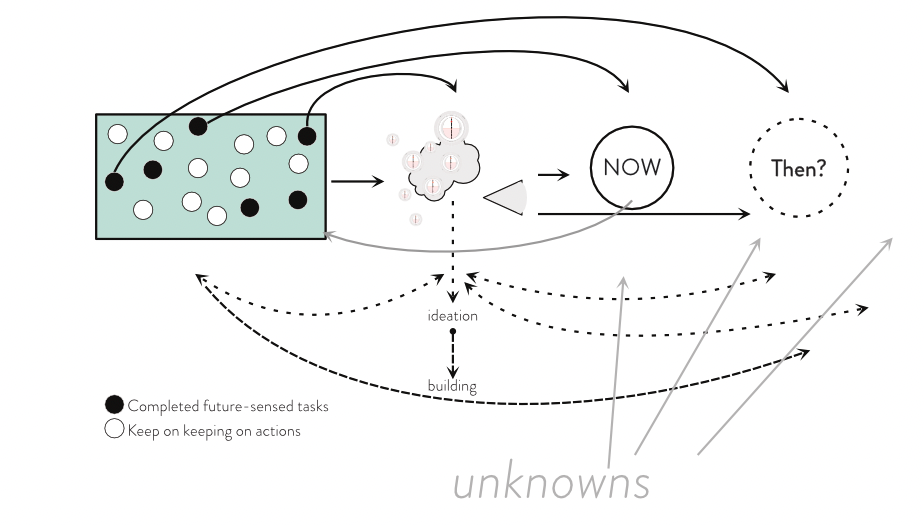We function into the future every day
Our relationship with time
Think about any person attending to their work. Assume this entailed, at least this one day, a commute. Maybe it was a standard commute, maybe they had a meeting in New York and they live in LA.
They got to work, probably on time. They ate at some point in the past few days (probably even this morning) so they aren’t distracted from the problem solving of their work. They already have plans in play about what they need to pick up on the way home, what chores have to be done sooner than later, and the various bits that they know they need to do to maintain their specific health. That health could be physical, emotional, social — this person is juggling the full environmental factors we discussed in the previous movement.
We know this because they are here, now, meeting at least the expectation of attendance. That means that they’ve already thought about the future well enough to survive to this moment in time. They are doing this thing that is impactful to their continued survival primarily in terms of earning money, which they will receive in the future for time spent now, which by then will have been in the past.
In the simplistic, judgmental, observer information lens, their job is simple and linear. The entire past is shunted into a collapsed nugget and set aside as unimportant to the specific person doing a specific act: attend.
There's more to it than that. We can be pretty sure that if/when there is a break in needing to attend and pay attention, this person will most likely go right back to living in the future. They might be ideating (think about a different job with more agency or less travel) or building (sending out texts to meet up with friends later), or thinking about how they got to this particular life so they can tweak their steps. Their mind going completely blank is the unlikely happening.
There mind and experience being completely blank until their job — "attend" —instantiated them never happened.
A significant subset of the completed future-sense nodes have arrows pointing to different places along the process: the cognitive cloud, now, and then. The perceptive eye is focused more on then than now. Now is referring to the past.
Underneath the whole is another series of vector force lines, starting from the cognitive cloud and focused on "ideation" and "building". The past and ideation are in mutual control. Then? and ideation are in mutual control. An unknown and ideation are in mutual control.
The past is one-way affecting an unknown future.
Underneath that whole is a vast repository of unknowns, affecting all potential futures.
They are moving from present, to future, to past, and back again, cycling through time throughout the day.
Beyond this movement through time? They are affecting their own ouruborus of perception.

